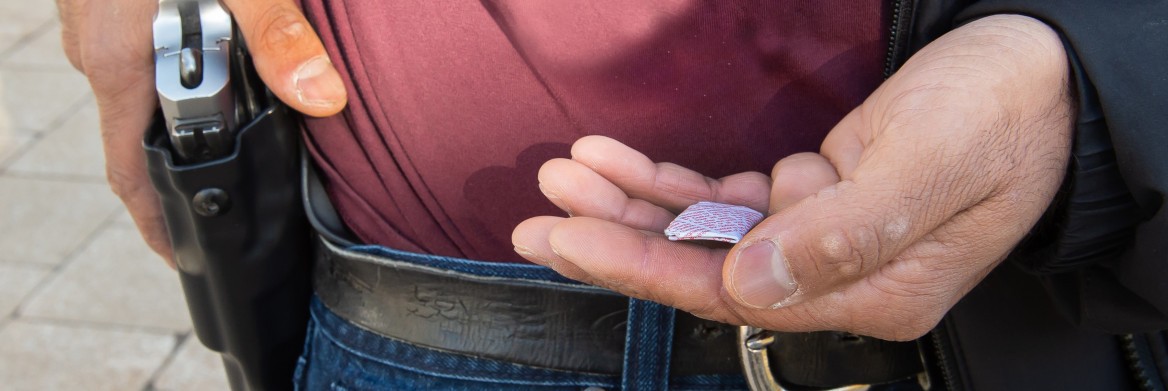Related link
For most scenarios in which police officers have contact with fentanyl, wearing gloves appears to be enough to protect against overexposure.
This conclusion comes out of the RCMP's report on the police use of naloxone — the pharmaceutical drug that temporarily suspends the effects of opioid overdose. The report indicates that naloxone was given to only four officers during its first year of use by the RCMP between October 2016 and 2017.
"Initially there was a lot of misinformation about how potent fentanyl was, in terms of the quantity that could cause an overdose, and that led to the view that overexposure was likely," says Paul von Schoenberg, the national advisor on RCMP occupational hygiene. "We know now that that won't happen when you rely on your training and use good judgment to ensure your safety."
Skin in the game
Absorption through the skin is possible but only likely if the substance is potent and stays on the skin for a long time, such as through a medical-grade trans-dermal patch similar to a nicotine patch.
"Based on the quantities of street-level fentanyl involved and the rate at which it's absorbed, it's very hard to be overexposed in that manner," says von Schoenberg, adding that wearing non-porous gloves and washing the skin with soap and cold water should prevent any possible adverse effects.
He says inhaling fentanyl dust at the scene is also unlikely because the number of airborne particles would be too few to cause overexposure. Touching the mouth, nose and eyes with powder on the hands is one way that fentanyl can be more easily absorbed into the body. However, this is still unlikely to result in overexposure.
"If I put it in your hand, it's not going to kill you. The key is ingestion," says Cpl. Eric Rajah, the RCMP's National Drug Co-ordinator and an experienced undercover operator. "If I come in contact with it at work, I handle it properly. I'm not going to ingest it."
Rajah says the nature of the exchange and the way illicit drugs are packaged for sale on the street make it unlikely that a substance, which is rarely pure, would come in contact with a covert officer's bare skin. But if it does, time spent in the hand is minimal because exchanges are done quickly, and the drugs slipped into a pocket to keep them out of sight.
"They usually come in this tightly wrapped little paper flap," says Rajah. "I can open it carefully, it's not going to attack me. It's not going to blow up in my face. And I'm not going to sniff test it."
Policing precautions
Supt. Shawna Baher led the component on fentanyl safety in the National Undercover Course between 2015 and 2018. She says that even officers who are covertly buying drugs on the street are at low risk of exposure if they follow their training.
"The members know to limit the amount of handling of the drug and to wash their hands as soon as they get back to their car, where they would have bottles of soap and water," she says.
But Baher adds, "it's always better to be safe than sorry" when it comes to taking precautions. In 2016, she ran the undercover operations where fentanyl was prolifically being sold in Surrey, B.C., at the onset of the crisis.
"We don't know what we're dealing with out there," says Baher. "The potency changes every time a dealer mixes a new version."
British Columbia continues to have the most cases of fentanyl overdoses nationally and has had the highest rate of naloxone use by RCMP officers in the country since 2014, when it first became a fentanyl hotspot. According to the naloxone report, of the total 244 times the drug was used by the RCMP on the public, 84 per cent were administered in B.C.
Baher was the second RCMP officer to administer naloxone in Canada and built the business case for naloxone use by the RCMP.
